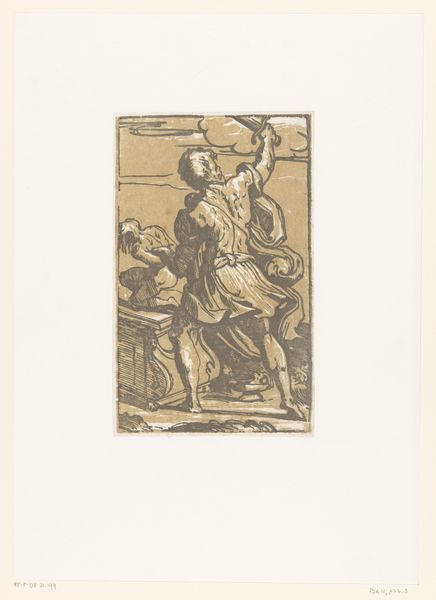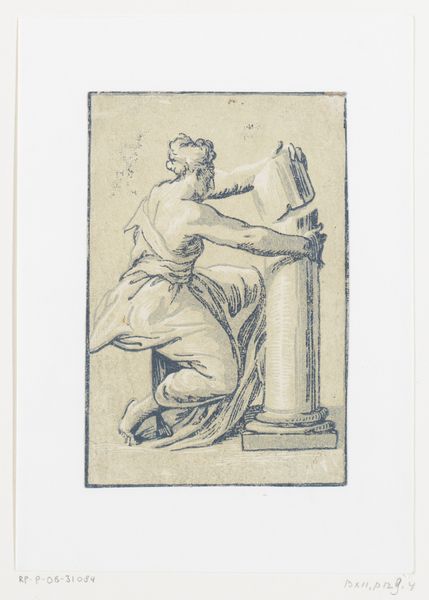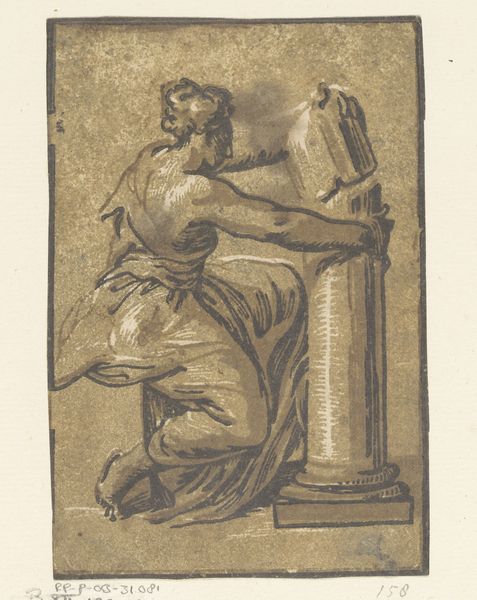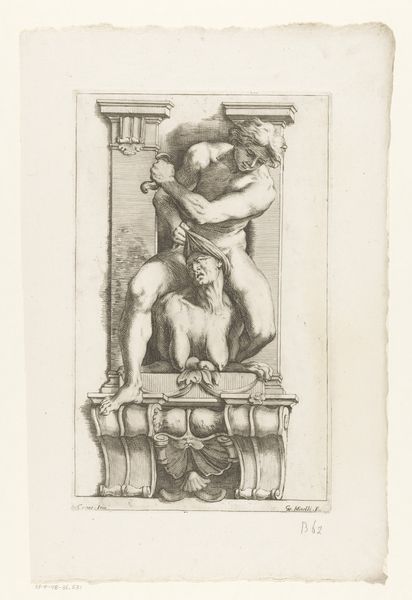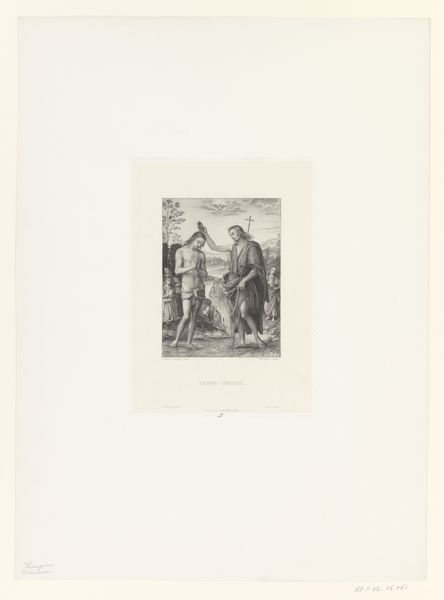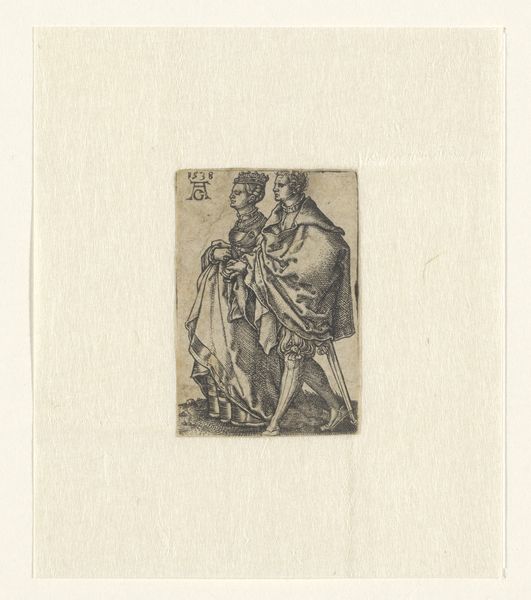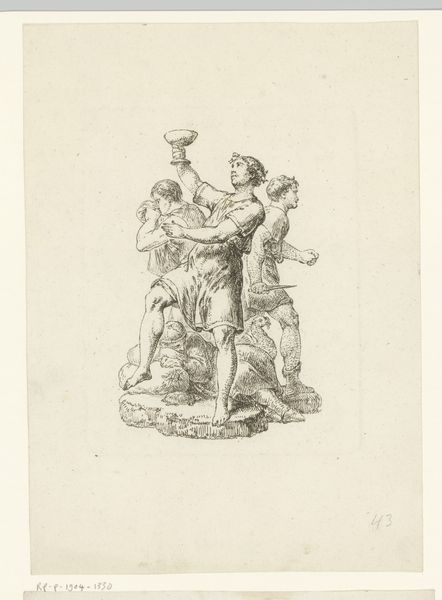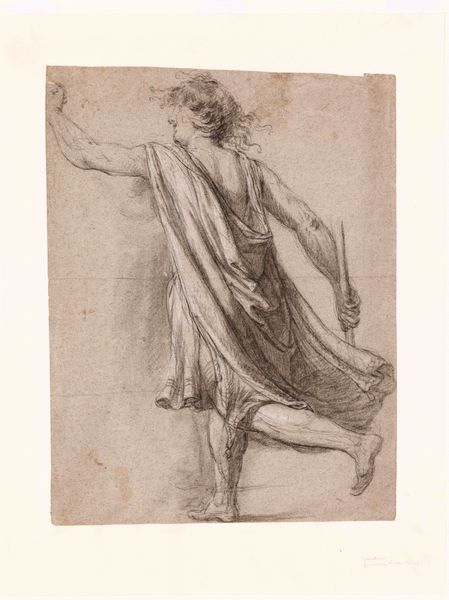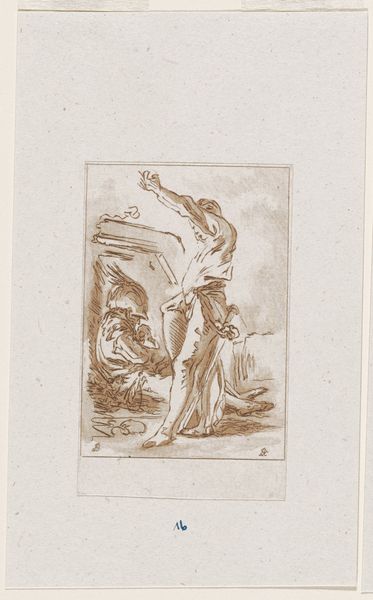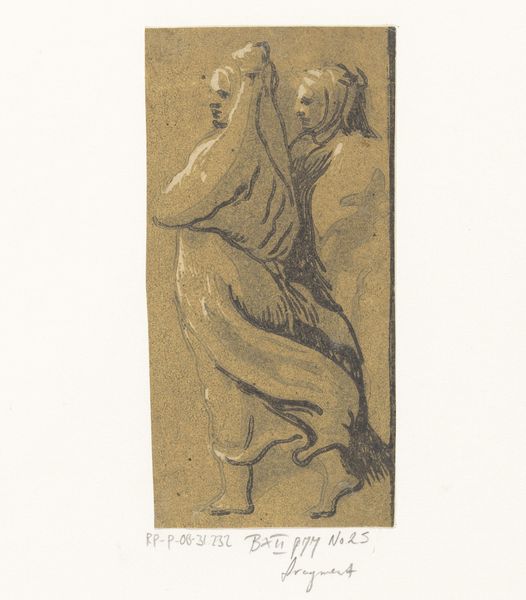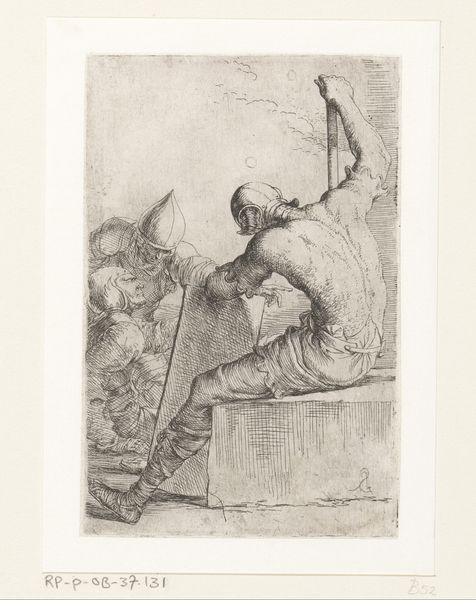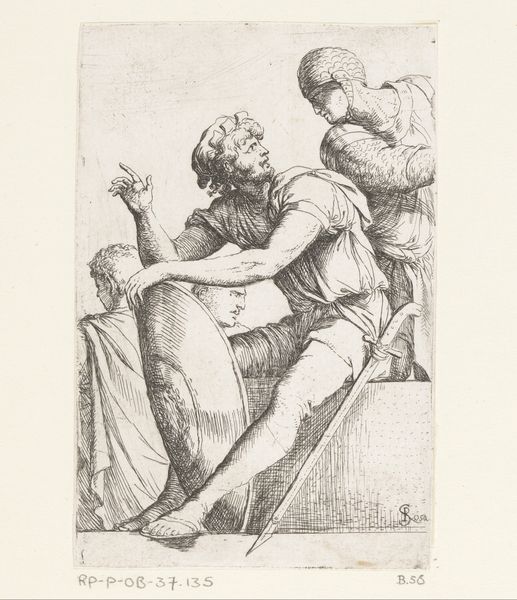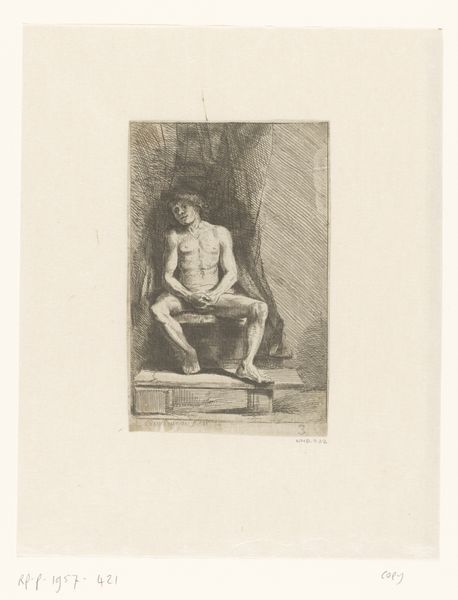
print, engraving
# print
#
figuration
#
history-painting
#
italian-renaissance
#
engraving
Dimensions: height 145 mm, width 97 mm
Copyright: Rijks Museum: Open Domain
Ugo da Carpi made this print, titled "Matigheid," sometime in the early 16th century. It's a chiaroscuro woodcut, a technique that was something of a specialty for him. What’s interesting about this print is the way that it’s made. It's not just one block, but multiple blocks of wood, each inked with a different tone. This creates a more complex image than a simple woodcut. The process involves careful alignment and printing of each block, one after the other. Looking closely, you can see how the different layers interact, creating depth and shadow. Da Carpi was part of a broader movement of artists exploring printmaking as a way to disseminate images more widely. This method allowed for a degree of tonal range usually associated with drawing or painting. Ultimately, “Matigheid” shows us how closely the Renaissance was grappling with the possibilities of mechanical reproduction, and how even a relatively simple process like woodcut could be elevated to a fine art.
Comments
No comments
Be the first to comment and join the conversation on the ultimate creative platform.
